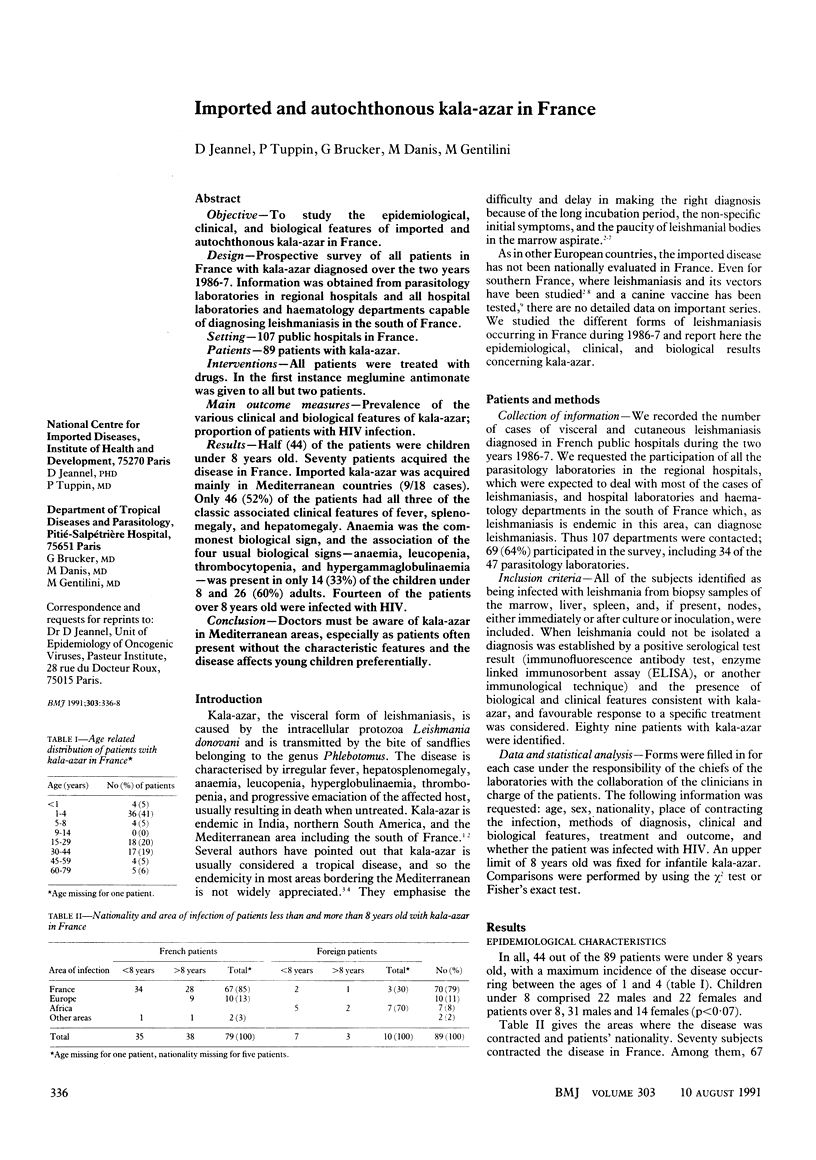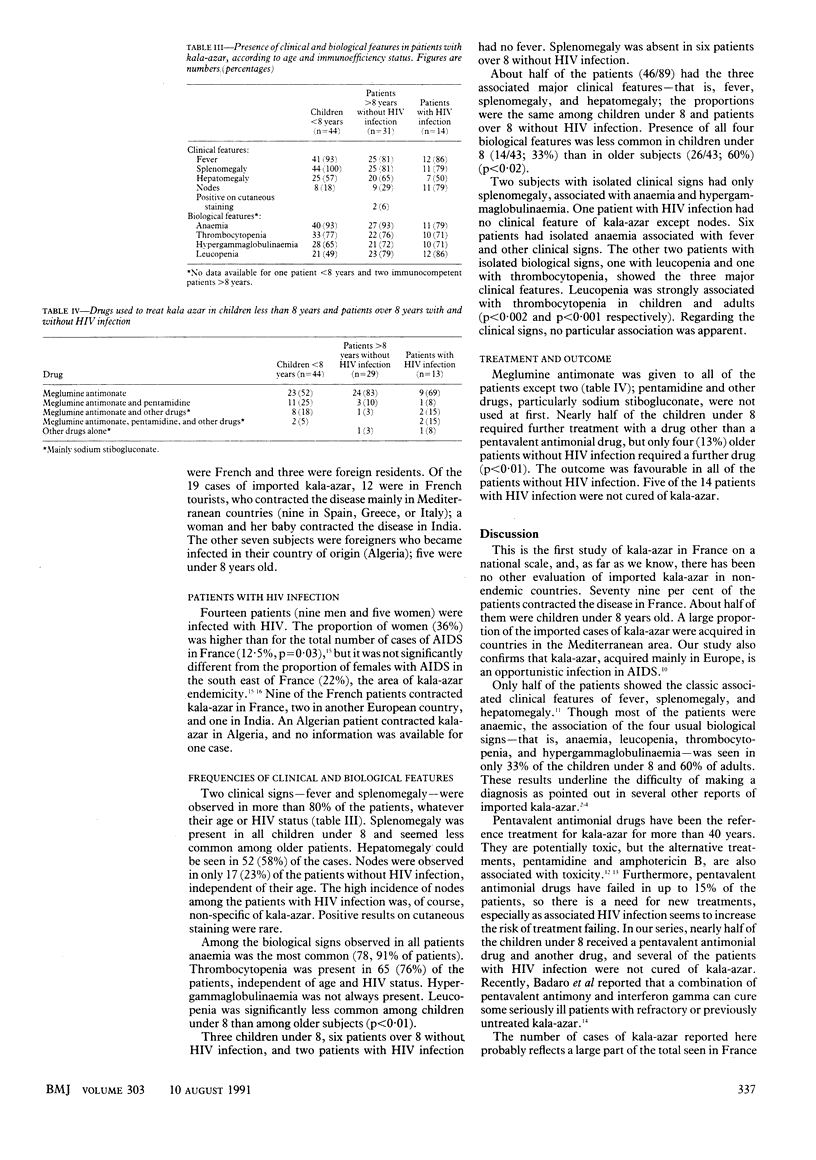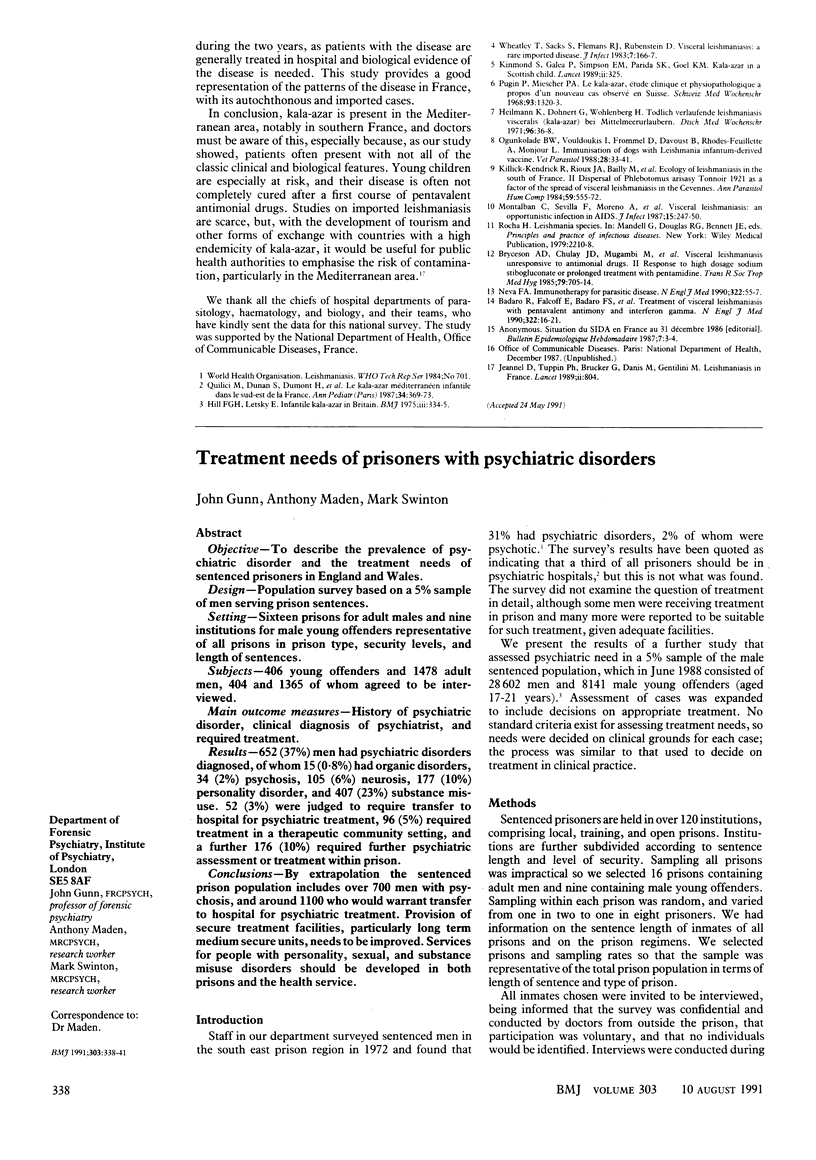Abstract
OBJECTIVE--To study the epidemiological, clinical, and biological features of imported and autochthonous kala-azar in France. DESIGN--Prospective survey of all patients in France with kala-azar diagnosed over the two years 1986-7. Information was obtained from parasitology laboratories in regional hospitals and all hospital laboratories and haematology departments capable of diagnosing leishmaniasis in the south of France. SETTING--107 public hospitals in France. PATIENTS--89 patients with kala-azar. INTERVENTIONS--All patients were treated with drugs. In the first instance meglumine antimonate was given to all but two patients. MAIN OUTCOME MEASURES--Prevalence of the various clinical and biological features of kala-azar; proportion of patients with HIV infection. RESULTS--Half (44) of the patients were children under 8 years old. Seventy patients acquired the disease in France. Imported kala-azar was acquired mainly in Mediterranean countries (9/18 cases). Only 46 (52%) of the patients had all three of the classic associated clinical features of fever, splenomegaly, and hepatomegaly. Anaemia was the commonest biological sign, and the association of the four usual biological signs--anaemia, leucopenia, thrombocytopenia, and hypergammaglobulinaemia--was present in only 14 (33%) of the children under 8 and 26 (60%) adults. Fourteen of the patients over 8 years old were infected with HIV. CONCLUSION--Doctors must be aware of kala-azar in Mediterranean areas, especially as patients often present without the characteristic features and the disease affects young children preferentially.
Full text
PDF


Selected References
These references are in PubMed. This may not be the complete list of references from this article.
- Badaro R., Falcoff E., Badaro F. S., Carvalho E. M., Pedral-Sampaio D., Barral A., Carvalho J. S., Barral-Netto M., Brandely M., Silva L. Treatment of visceral leishmaniasis with pentavalent antimony and interferon gamma. N Engl J Med. 1990 Jan 4;322(1):16–21. doi: 10.1056/NEJM199001043220104. [DOI] [PubMed] [Google Scholar]
- Bryceson A. D., Chulay J. D., Mugambi M., Were J. B., Gachihi G., Chunge C. N., Muigai R., Bhatt S. M., Ho M., Spencer H. C. Visceral leishmaniasis unresponsive to antimonial drugs. II. Response to high dosage sodium stibogluconate or prolonged treatment with pentamidine. Trans R Soc Trop Med Hyg. 1985;79(5):705–714. doi: 10.1016/0035-9203(85)90199-3. [DOI] [PubMed] [Google Scholar]
- Heilmann K., Döhnert G., Wohlenberg H. Tödlich verlaufende Leishmaniasis visceralis (Kala Azar) bei Mittelmeerurlaubern. Dtsch Med Wochenschr. 1971 Jan 1;96(1):36–38. doi: 10.1055/s-0028-1108196. [DOI] [PubMed] [Google Scholar]
- Jeannel D., Tuppin P., Brucker G., Danis M., Gentilini M. Leishmaniasis in France. Lancet. 1989 Sep 30;2(8666):804–804. doi: 10.1016/s0140-6736(89)90868-4. [DOI] [PubMed] [Google Scholar]
- Killick-Kendrick R., Rioux J. A., Bailly M., Guy M. W., Wilkes T. J., Guy F. M., Davidson I., Knechtli R., Ward R. D., Guilvard E. Ecology of leishmaniasis in the south of France. 20. Dispersal of Phlebotomus ariasi Tonnoir, 1921 as a factor in the spread of visceral leishmaniasis in the Cévennes. Ann Parasitol Hum Comp. 1984;59(6):555–572. [PubMed] [Google Scholar]
- Kinmond S., Galea P., Simpson E. M., Parida S. K., Goel K. M. Kala-azar in a Scottish child. Lancet. 1989 Aug 5;2(8658):325–325. doi: 10.1016/s0140-6736(89)90502-3. [DOI] [PubMed] [Google Scholar]
- Montalban C., Sevilla F., Moreno A., Nash R., Celma M. L., Muñoz R. F. Visceral leishmaniasis as an opportunistic infection in the acquired immunodeficiency syndrome. J Infect. 1987 Nov;15(3):247–250. doi: 10.1016/s0163-4453(87)92728-9. [DOI] [PubMed] [Google Scholar]
- Ogunkolade B. W., Vouldoukis I., Frommel D., Davoust B., Rhodes-Feuillette A., Monjour L. Immunization of dogs with a Leishmania infantum-derived vaccine. Vet Parasitol. 1988 Apr;28(1-2):33–41. doi: 10.1016/0304-4017(88)90016-7. [DOI] [PubMed] [Google Scholar]
- Quilici M., Dunan S., Dumon H., Franck J., Gambarelli F., Toga I., Perrimond H., Michel G., Mattei M. Le kala-azar méditerranéen infantile dans le sud-est de la France. Considérations d'actualité. Ann Pediatr (Paris) 1987 May;34(5):369–373. [PubMed] [Google Scholar]
- Wheatley T., Sacks S., Flemans R. J., Rubenstein D. Visceral leishmaniasis: a rare imported disease. J Infect. 1983 Sep;7(2):166–167. doi: 10.1016/s0163-4453(83)90716-8. [DOI] [PubMed] [Google Scholar]


